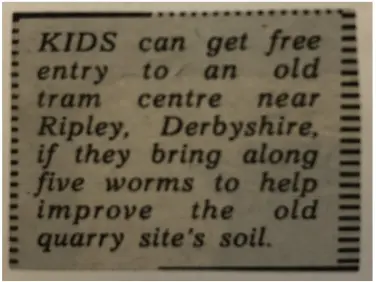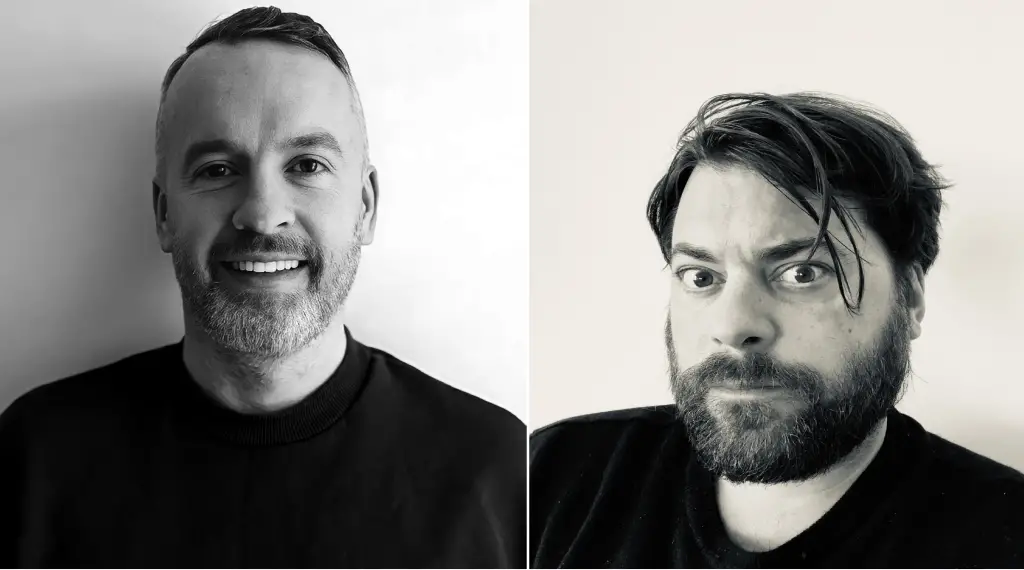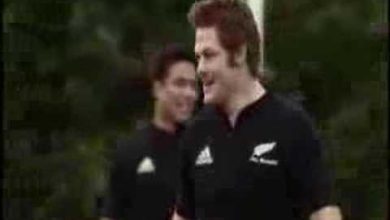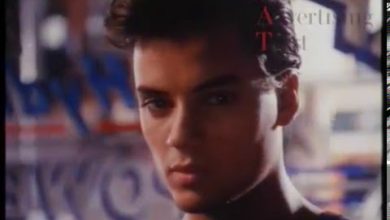Grey’s Chris Lapham and Aaron McGurk pick their Desert Island Ads
HMM… WHAT TO TALK ABOUT? AHA!… INSPIRATION.
The spark. The muse. The sudden touch of enlightenment.
Whatever you call it, creatives are always on the hunt for it. Especially when staring at a blank screen for days with nothing but the thought of dinner rattling around inside their head. Yep, coming up with ideas has always been the source of much discussion for creative people throughout time. So, here are the ads that have inspired us around the subject of being inspired.
Desert Island Ads
Lego from the 80s
This is a very old TV advert that not many will remember, but it’s one that holds up to this day in our humble opinion. In fact, it could easily go up against the likes of any Honda advert, as a marvel of playful creativity and craft that stands out in an ad break.
Using stopframe animation, the film shows a battle between two Lego adversaries, with each one transforming into a bigger and better competitor. The narrator of the film is the iconic comedian Tommy Cooper (it’s actually an impersonator, but don’t tell anyone!), with his rasping, unique voice lending a sense of mischief that completes this perfectly orchestrated piece of entertainment. But what this advert taught us beyond just the craftmanship of making something memorable is the importance of inspiration.
Let us explain.
A while before this ad was made, Disney released a film called The Sword in the Stone, featuring a ‘wizards duel’, where Merlin and a witch battled each other using just their wits to transform into different animals that could beat the other.
Now, we don’t know if this was the inspiration for the Lego ad, but the timing makes that highly likely, and there’s nothing wrong with that. On the contrary: the importance of reference and inspiration is something we learnt at Wieden+Kennedy, and more importantly how you use it. There’s nothing worse than a team showing another advert as a reference point. But art, real life, mythical stories, weird postcards found in a jumble sale, or – in this case – old Disney films, are all places to find inspiration that will lead to more interesting work.
Lesson learnt: To create the least expected work, find inspiration from the least expected places.
VW Night Drive
We were at DDB when this advert got made by the talented team Sam&Shish. We think it’s one of the most beautiful car adverts ever made. But that’s not what makes it so impressive, because this advert taught us something valuable that has affected how we do things ever since.
There was no brief. Well, there was a brief to ‘do an advert’, but there was no information about the car. It was a brief that nobody wanted to touch, deemed a ‘bogey brief’ (that’s not actually a term used, ever).
Sam&Shish didn’t let that stop them. They found inspiration elsewhere. They unearthed a true insight around driving that was yet to be told, and owned it in a poetic fashion. This advert shows that even when you think there’s nothing to say, there’s always something.
Lesson learnt: Not having anything to say can be the inspiration you need to say something different.
Unknown Tram Museum advert
It’s not a big ad. It’s definitely not an iconic ad. But it’s an ad that changed the way we thought about the possibilities of ads.
Many years ago, we happened upon this tiny article..actually, we don’t think you can even call it that..and it struck us as a thing of genius. It told us about an advert for a struggling Tram museum, which had unfertile ground and couldn’t grow anything to make the place bloom. But this random problem inspired the creative, who came up with the idea to run a small ad that led with the headline ‘Children get in free if they bring a worm’. And what child wouldn’t want to do that?

It made us realise that there’s more to this advertising malarkey than just doing pretty posters and films that sell stuff. Adverts can solve all manner of problems in interesting ways. The problems of a business can become the inspiration for the adverts.
Lesson learnt: You can find more interesting inspiration when you dig a bit deeper (like a worm).
Guinness Surfer
‘Not that bloody ad again’, we hear you groan. We’re sorry, but yes; just one more note of adoration for this wonderful piece of work.
But it’s about the inspiration behind it, remember?
Now, this might be true, or it might be total bullshit to help create a myth around the greatest ad ever made. But we were told by a reliable source (the man who made it himself, no less) that they didn’t have the horses in the waves idea until much later on in the process. For a long time, they only had a surfer standing on a beach waiting for the perfect wave.
Not much of an ad, right?
And the creatives agreed. But they knew they were onto something, so they never gave up on it.
It wasn’t until one of them went out for dinner one night (at a Chinese restaurant if memory serves us right) that he happened upon the eureka moment. There on the wall, as he headed to the men’s room, was the Walter Crane picture of ‘Neptune’s Horses’. An historic painting that ended up inspiring an historic ad.
Lesson learnt: Good things come to those who wait for inspiration.
The Moldy Whopper
A beautiful, but ugly idea.
So brave. So simple. So disruptive.
The Moldy Whopper threw a grenade into the world of food advertising. Burger King only uses fresh ingredients in its burgers without any of that chemical preservative shit, and to prove it, they showed the natural deterioration of a Whopper over a few days.
So, the inspiration for this came from the product itself. A strategy formed by embracing the finer details of the thing you’re trying to sell. This is something you don’t see too often. Advertising often ignores the actual product specifics and creates generic messaging. But the creatives behind this masterpiece let the facts inspire them – and let the truth do the talking.
Lesson learnt: Take inspiration from the product’s truths, and you’ll create less contrived ideas.
So, there you have it. A few ads that taught us a few things about the game of advertising. There are loads more obviously, but we don’t have time for that. We’ve got some sun-bathing on a desert island to be getting on with, while the thought of dinner rattles around inside our empty heads.
 Creative duo Aaron McGurk and Chris Lapham are creative directors at Grey London.
Creative duo Aaron McGurk and Chris Lapham are creative directors at Grey London.










